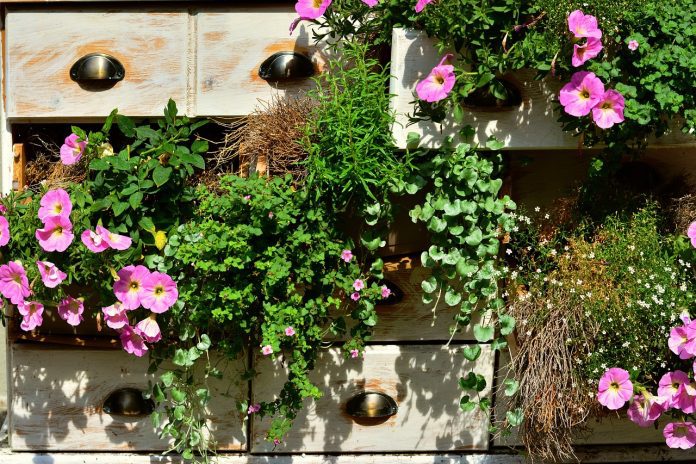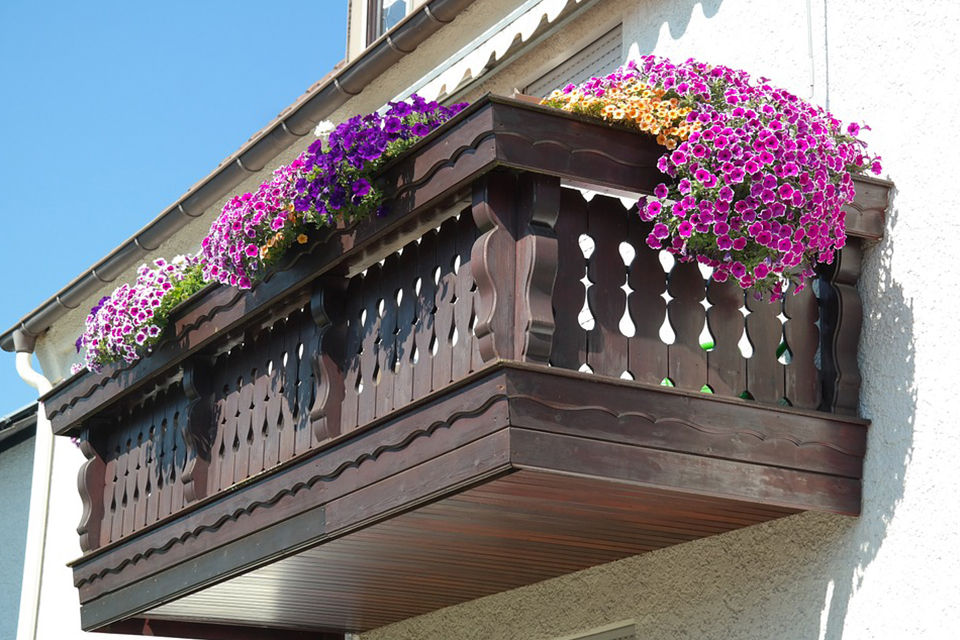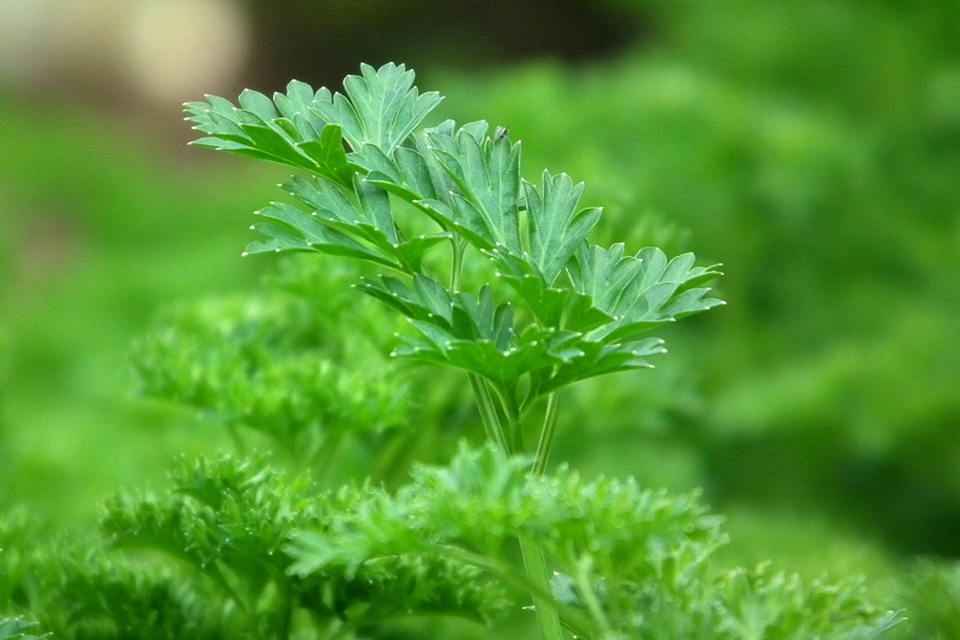
Recently I visited a friend in Chicago who has a balcony garden. He lives in the middle of the city, steps from downtown. His apartment is on the third floor, and he has a view of the skyline out his window. His apartment is very urban, but when I opened his back door and looked at his balcony, it had turned into an oasis of various vegetables and herbs in pots.
He created a balcony garden in the middle of the city! This got me thinking about the various benefits of a balcony garden and how someone without a green thumb can get started.
Gardening has become more popular over the years as a fun hobby and stress reliever. However, not everyone has the benefit of a yard or space to garden, and it can be intimidating to start a garden as a novice. Therefore, balcony gardening has gained popularity for many reasons. There are many benefits to balcony gardening, and it’s easy to get started.
Benefits of a Balcony Garden
There are several benefits to having a balcony garden, otherwise referred to as a container garden.
No seasonal constraints
With outdoor, in-the-ground gardening, the gardener has to wait until planting season. In tropical climates, for example, the rainy season is keen time. For temperate regions, it would be the beginning of winter. In temperate regions, it would be the beginning of winter. But in balcony gardening, you don’t have to wait until planting season to grow container plants. When planting in a container, you can create perfect growing conditions. For example, you can create your own “mini greenhouse” by covering the container of any plant you choose.
Ideal for “newbie” gardeners
Often, when a novice gardener gets started on an outdoor garden, they are discouraged by the factors that go into this type of gardening. Without knowledge of how to properly prepare the garden to prevent unwanted pests, their garden can be overrun by weeds, insects and other pests. After this adverse experience, the new gardener may give up. With balcony gardening, however, pests, weeds, and insects can be easily noted and removed. Weeds are a minimal problem with a balcony garden. Novice gardeners can quickly start their gardening journey with a balcony garden.
No space limits
The reason many people put off gardening is that they don’t have space. With a balcony garden, you don’t have to worry about not having a yard or extra space to create your garden. All you need is a balcony. Also, companion planting has become a popular way to use a small space efficiently. With companion planting, you can plant many different varieties of plants in the same container.
What to Consider When Creating a Balcony Garden
There are several factors to consider when creating a balcony garden. Access to water and sunlight is key for plant growth, and you should put thought into the garden’s design. You will also have to decide on what type of containers and plants to use.
Water
Make sure you have enough water handy, whether it be from a hose, watering can, or irrigation system.
Sunlight
Keep in mind that the sun’s path changes over the seasons. North- and east-facing balconies get less sunlight than south- and west-facing ones. Depending on your plants and which direction your balcony faces, make sure your plants are getting enough sunlight.
Containers
The weight and drainage ability of containers are very important. Lightweight containers are better than heavy ones, and the container needs to drain well. Plastics and wood are good lightweight options. There are plastic containers on the market that give the appearance of clay. If you choose to have larger containers, place them on a platform with casters to allow for mobility. If the balcony itself doesn’t drain well, place a saucer underneath the container. Also, make sure that your railings and ceilings can support the weight of the containers you choose.
Design
Have a plan for when designing your balcony garden. Some factors to consider are colors, textures, a combination of container and plant sizes to give variety and personality, repeating plants and colors in different parts of the garden, and using a large plant as a focal point for the garden. Take a look at the garden from the outdoors, as well as inside your home, before committing to it to make sure it looks good aesthetically.
Plants
Before deciding on your plants, consider how much space they will need, their size at maturity, the amount of sunlight you have available, and their appearance during all four seasons. Also, keep in mind the rules governing indoor gardening in your building.
Best Plants for Balcony Gardening
When creating a balcony garden, the best plants are the more colorful, fragrant flowers and foliage plants. There are many plants to choose from, but you can find some great ideas below:
Flowers
- Marigolds. They are low-maintenance, pest repellent and bright. They grow best in warm climates.
- Begonias. They are easy to grow and will constantly bloom in the summertime if kept in partial shade. They can grow in the winter if they are in tropical climates.
- Chrysanthemums. They come in many varieties and can grow almost anywhere in the world.
- Hand Holding SeedlingPansies. They come in many varieties and are perfect for growing in window boxes and pots.
Vegetables
If you are set on growing vegetables in your balcony garden, here are four good choices:
- Tomatoes. They are the most productive vegetables to grow in a pot. They do need ample sun and work best in an area with a lot of light.
- Beans. They are productive in pots and easy to grow. They need plenty of sunlight, a pot that is minimum 12 inches deep, and a strong structure for support.
- Lettuce. It grows quickly, and you can harvest them multiple times throughout the growing season.
- Hand Holding SeedlingPeppers and chilis. They grow very well in pots and are very productive. They also look very good in pots and need a lot of sun and warmth.
Herbs
If herbs are your thing, here are four good choices:
- Parsley. It grows easily in the sun or shade and is not picky about soil. It is one of the easiest herbs to grow in a container.
- Mint. It is a very aromatic, long-lasting plant that can be grown in pots or soil.
- Lavender. This good-smelling herb can be grown in many climates. It is suitable for cool or temperate climates but can also grow in subtropical regions.
- Hand Holding SeedlingThyme. It is easy to grow, adapts to all types of soils, and is resistant to drought.
Good Ideas for Balcony Garden Additions
If you would like to set up a balcony garden but want some personality beyond plants and vegetables, here are some ideas:
- 1Use a trellis. A trellis can be added to a balcony garden to give it some privacy and add to the aesthetic factor.
- 2Structural trees. If you can fit them, long, tall trees in pots look elegant in a balcony garden when placed in the balcony corners.
- 3Mounted mirror. It maximizes the small space by bouncing light to brighten any dark corners, enhancing the color of vivid plants and giving the illusion of space.
- 4Tables and furniture. If you have space, consider adding tables, chairs, and couches to the balcony to give it an inviting atmosphere.
A balcony garden can be a great option for novice gardeners as well as experienced gardeners with little space. There are no seasonal or space constraints, and the gardener can add their unique touches to the garden with additions that match their personality. As long as the factors that make a productive garden are taken into consideration, such as water, sunlight, and plants, anyone can turn their balcony into a beautiful and inviting oasis.







